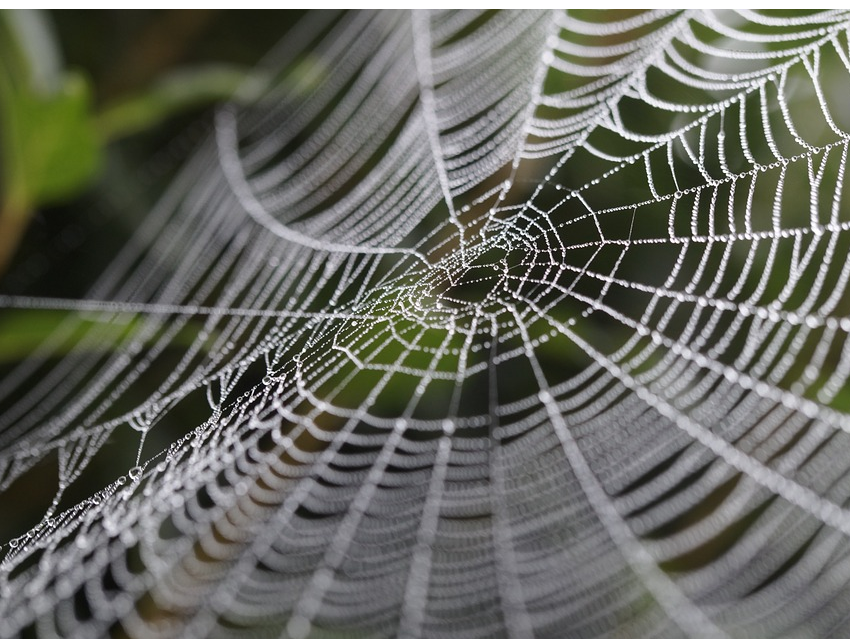Soluble silk proteins, so-called spidroins, are connected by web spiders to form fibers of extraordinary toughness. Dragline silk, which is used as a lifeline and to build the web frame, is the toughest known biological thread and is thus a current focus of biomimetic material sciences. The spidroin N-terminal domain (NTD) polymerizes spidroins through a complex mechanism of dimerization. However, the molecular mechanisms that underlie phase and structural transitions of spidroins are only understood in parts.
Ute A. Hellmich, Johannes-Gutenberg-University Mainz, Germany and Goethe-University, Frankfurt, Germany, Hannes Neuweiler, Julius-Maximilians-University Würzburg, Germany, and colleagues have analyzed sequences of spidroin NTDs and found an unusually high content of the amino acid methionine. The team then simultaneously mutated all methionines present in the hydrophobic core of a spidroin NTD from the dragline silk of the Euprosthenops australis nursery web spider to leucine. They compared the folding, stability, and dynamics of the resultant with an unmodified protein. They used photoinduced electron transfer fluorescence correlation spectroscopy (PET-FCS) and NMR spectroscopy.
The mutant gained a substantial amount of stability compared to the wild-type protein. Its structure is fully preserved. Its ability to dimerize is considerably damaged; the wild-type binds much more strongly to other silk proteins. Conformational dynamics of the mutant are blocked, in contrast to the wild-type protein.
According to the researchers, their results show that methionine in a hydrophobic core equips a protein with the capacity to dynamically change shape and thus to optimize its function. Not only the shape of a proteine but also its flexibility determine how it functions.
- Methionine in a protein hydrophobic core drives tight interactions required for assembly of spider silk,
Julia C. Heiby, Benedikt Goretzki, Christopher M. Johnson, Ute A. Hellmich, Hannes Neuweiler,
Nature Communications 2019.
https://doi.org/10.1038/s41467-019-12365-5



